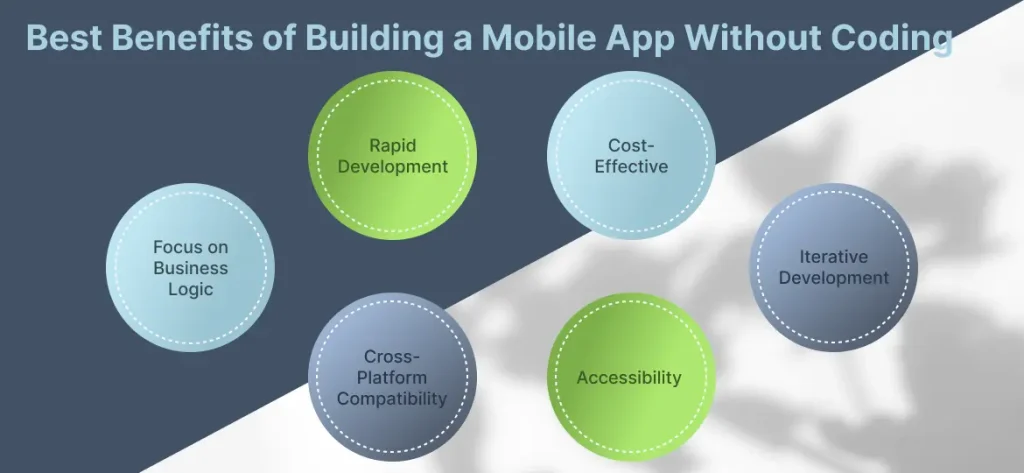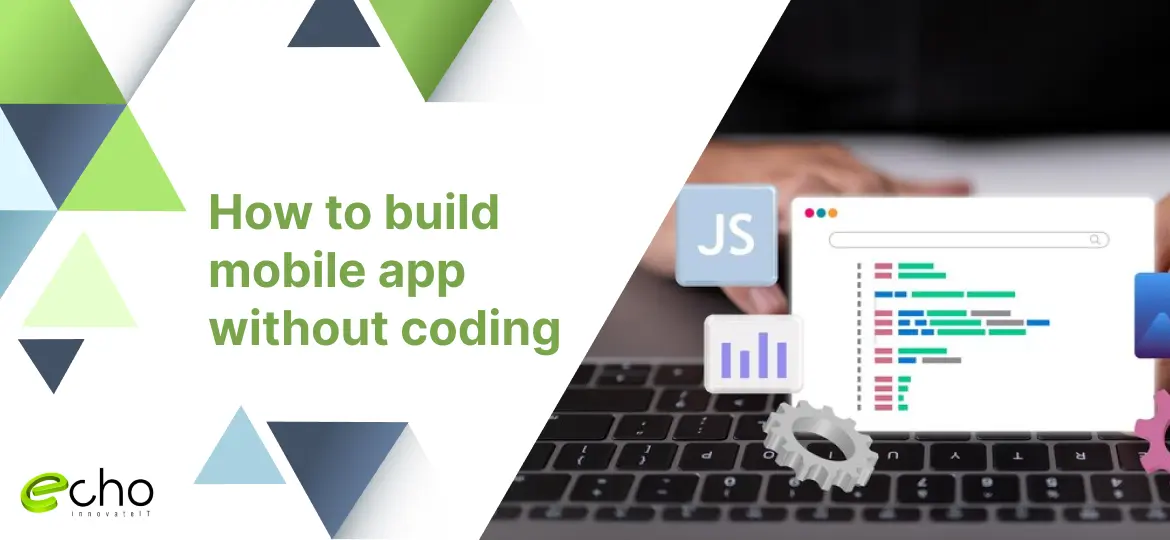Anyone wishing to develop a mobile app usually thinks it requires a firm grasp of programming languages with years of coding experience. But trust me, that was in the past. Today, no-code platforms provide pre-built components and drag-and-drop interfaces for creating an application. Where a traditional coder builds everything from scratch, making it a lengthy and complex process, no-code users do not require substantial programming language knowledge, which makes it more accessible to beginners.
Today, organizations must know how to build an app to stay ahead in highly competitive markets. Data suggests that almost 70% of mobile apps will be built from low-code or no-code platforms in 2025. This allows companies to design software systems without requiring big teams of developers, saving time, money, and resources. Thus, many companies have already incorporated low-code/no-code development to reduce complexity in application development, accelerate the application design process, and be better positioned to adapt and respond to rapidly changing business conditions.
Best Benefits of Building A Mobile App Without Coding

Knowing its advantages should be your first priority if you want to learn how to create an application without coding. Low-code/no-code solutions include web-based reusable application components and drag-and-drop features, which reduce application development complexity and speed up the design process. The technologies promote continuous innovation, boost corporate agility, and improve consumer and employee experiences, all while lowering costs and streamlining operations. Below are some of its best benefits:
Rapid Development
No-code platforms allow users to speed up the development process by eliminating traditional coding that requires time and experience. These platforms have pre-built templates and visual interfaces with drag-and-drop elements, boosting development.
Hence, no-code platforms enable quick prototypes and iteration, cutting down development time to weeks or even days, whereas traditional coding techniques can take months.
Cost-Effective
Not only do low-code platforms save time, but they also save money. It allows businesses to avoid hiring software development teams for their project and save a lot of revenue. Additionally, subscription-based pricing structures are common in no-code platforms and are typically less expensive than employing a development staff.
Iterative Development
With the focus on agile development, low-code platforms allow rapid iteration and experimentation so that users can test and update their apps with relevant user feedback. Your software can be readily updated and modified to stay current and satisfy changing user needs.
Accessibility
Low-code development is accessible to many non-IT professionals with almost no coding experience, bringing a digital transformation for many. Because low-code platforms save time and money on application development, they can be crucial to digital transformation.
Since they are the ones who know and comprehend operational difficulties the best, they enable non-developers to get involved in app development regardless of their technical experience.
Cross-Platform Compatibility
With low-code development, many mobile apps can be used on iOS and Android devices, allowing cross-platform development. This assures a smooth user experience across platforms without requiring independent development work.
Focus on Business Logic
Investing in low-code development not only helps companies in creating a mobile app but also in reducing operational challenges. Instead of being mired in technical intricacies, you may concentrate on your app’s main business logic and user experience. This can help professionals to make different strategies to market and feature their application rather than worrying about technical problems an app comes with.
Also Check:
6 Easy Steps To Develop A Mobile App Without Coding
Let’s come to the central part. Mobile app development but without coding! It can be achieved easily through low-code development tools like Adalo, Bubble, Zoho Creator, etc. Let’s understand step-by-step how you can develop a mobile app without coding in 2024:
Brainstorm An App Idea
The first step always has to be the same. Then, whether you are developing an app with a traditional coding or no-coding platform, you have to decide what kind of app you wish to build. It can be an e-commerce app, social media app, educational app or even a gaming app.
Think about the issues your app will resolve, the benefits it will bring customers and the special features it will have. To evaluate your proposal and learn more about user demands, conduct market research. This will serve as the basis for an app’s success.
Choose A No-Code Platform
Choosing a no-code platform should be your next step. Not every no-code app builder has the capabilities you need for your company. Therefore, consider the ideal platform for creating no-code apps by considering ASPs like pricing, support features, convenience of use, and user interface.
Here are some of the popular no-code platforms you can choose from:
- Glide
- Bubble
- Softr
- Bildr
- WeWeb
- Mendix
- Quickbase
- AppSheet
- Creatio
- Airtable
Choose Template And Designs
Starting a template makes app development more accessible. That is another significant advantage of using an app creator rather than learning to code from scratch. A template that corresponds to the kind of app you wish to make should be provided as a starting point by an app builder.
The kind of app you wish to make should be reflected in your selected template. Every template has characteristics based on the type of business ultimately saving a lot of your time in mobile application development.
Add User Interface
The user interface is the area of your software that users interact with. This covers the design, colour scheme, typefaces, and application visuals. You can add components to your app’s user interface using the drag-and-drop feature of your no-code platform.
To create a more customized app, you should alter the layout, colour scheme, or icon even though the main design components are added to app templates.
Test Your Mobile App
Testing your app’s usability and functionality in-depth after development is essential. Identify any defects or problems that crop up during the testing stage and make the necessary adjustments to ensure the app functions properly for users.
You can test your app across various hardware and operating systems to ensure it works. Another option is asking friends and relatives to test your app and provide feedback.
Launch Your App
Congratulations! You have successfully built a mobile app without coding. It’s time to publish your app and see how it performs for your users. Get feedback for your app and make sure you continuously make adjustments so that it can run on all devices effectively.
Launching an app through low-code platforms is relatively easy as they have built-in tools to assist you in publishing your app to Google Play or App Stores.
Conclusion
Wrapping up today’s blog, one can agree that developing your mobile app is no longer a dream for a few people. It can be achieved easily with low-code or no-code platforms helping companies achieve their business goals faster than traditional development technologies. Using no-code solutions, entrepreneurs can free developers’ time, increase revenue, and speed up app development.
The environment of mobile app development services will continue to change in apps, and no-code solutions will be crucial in enabling people and companies to produce creative and powerful apps. So, it’s time to bring a business transformation by taking your first step in app development without worrying about coding!
Get in touch with us to get a no-code development guide and assistance.
FAQs- How To Build A Mobile App Without Coding
Can I create a mobile app without any coding skills?
Yes, you can build a mobile app without coding using no-code app builders like Adalo, Glide, or AppGyver. These platforms offer drag-and-drop tools and pre-built templates to design and launch apps quickly.
What types of apps can I create using no-code platforms?
No-code tools allow you to build various apps, such as e-commerce apps, booking systems, social networks, and productivity tools, depending on the platform’s features.
Are no-code apps suitable for both Android and iOS?
Most no-code app builders support publishing your app on both Android and iOS app stores. Be sure to check if the platform you choose offers cross-platform deployment.
How much does it cost to build a no-code app?
Costs vary depending on the platform. Many no-code tools offer free plans for basic apps, while advanced features or custom branding typically require a subscription, ranging from $10 to $100+ per month.



